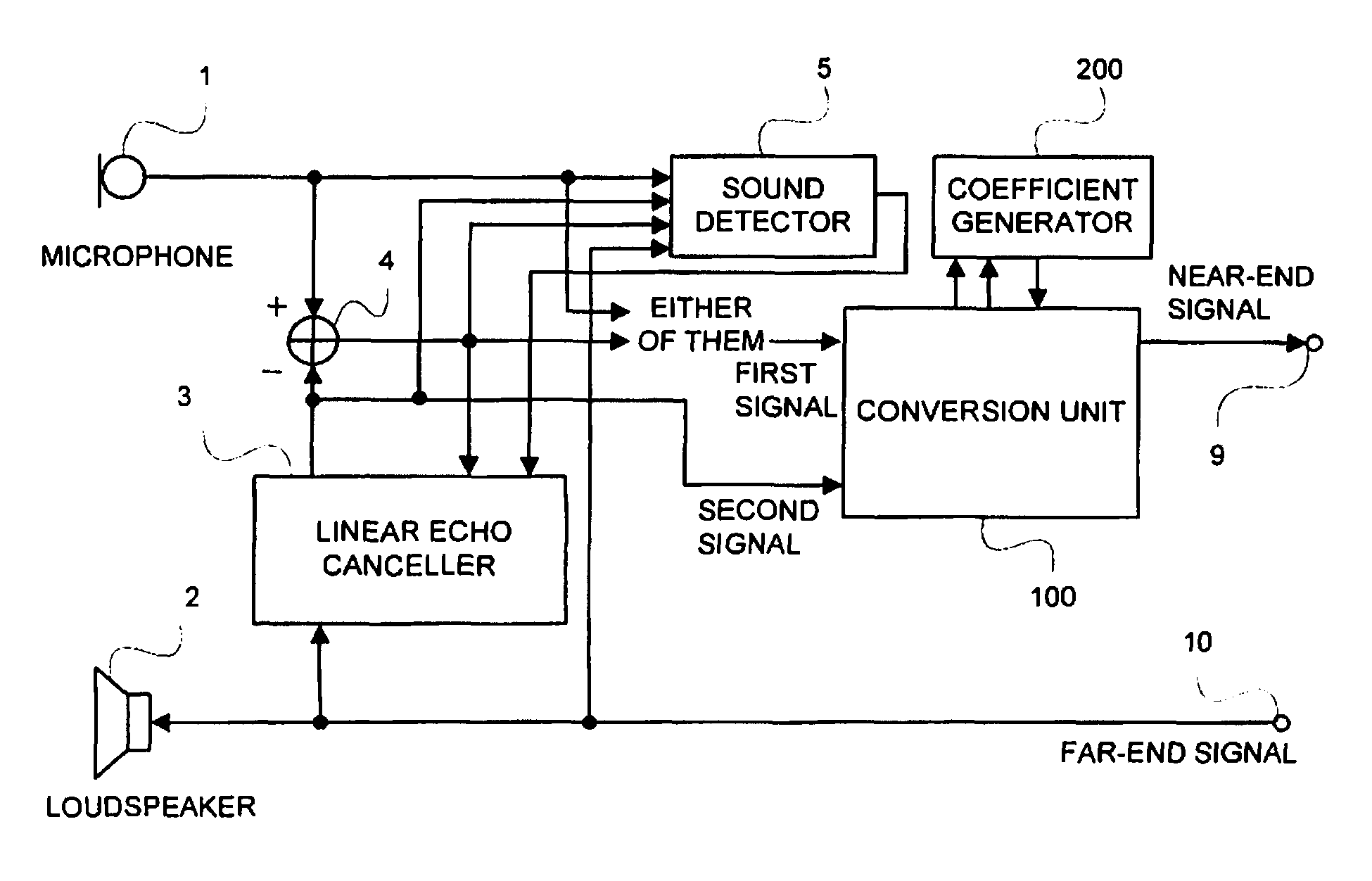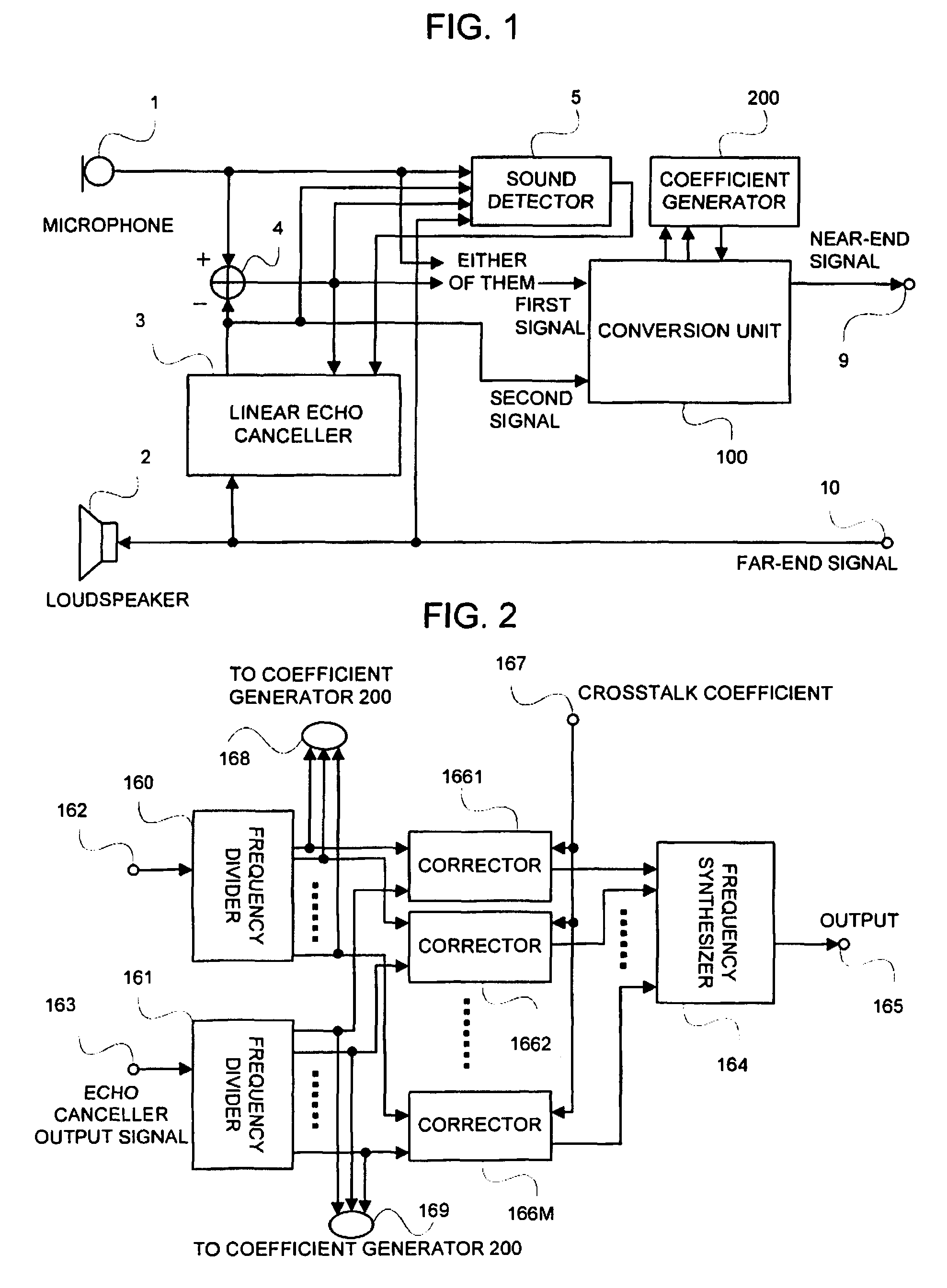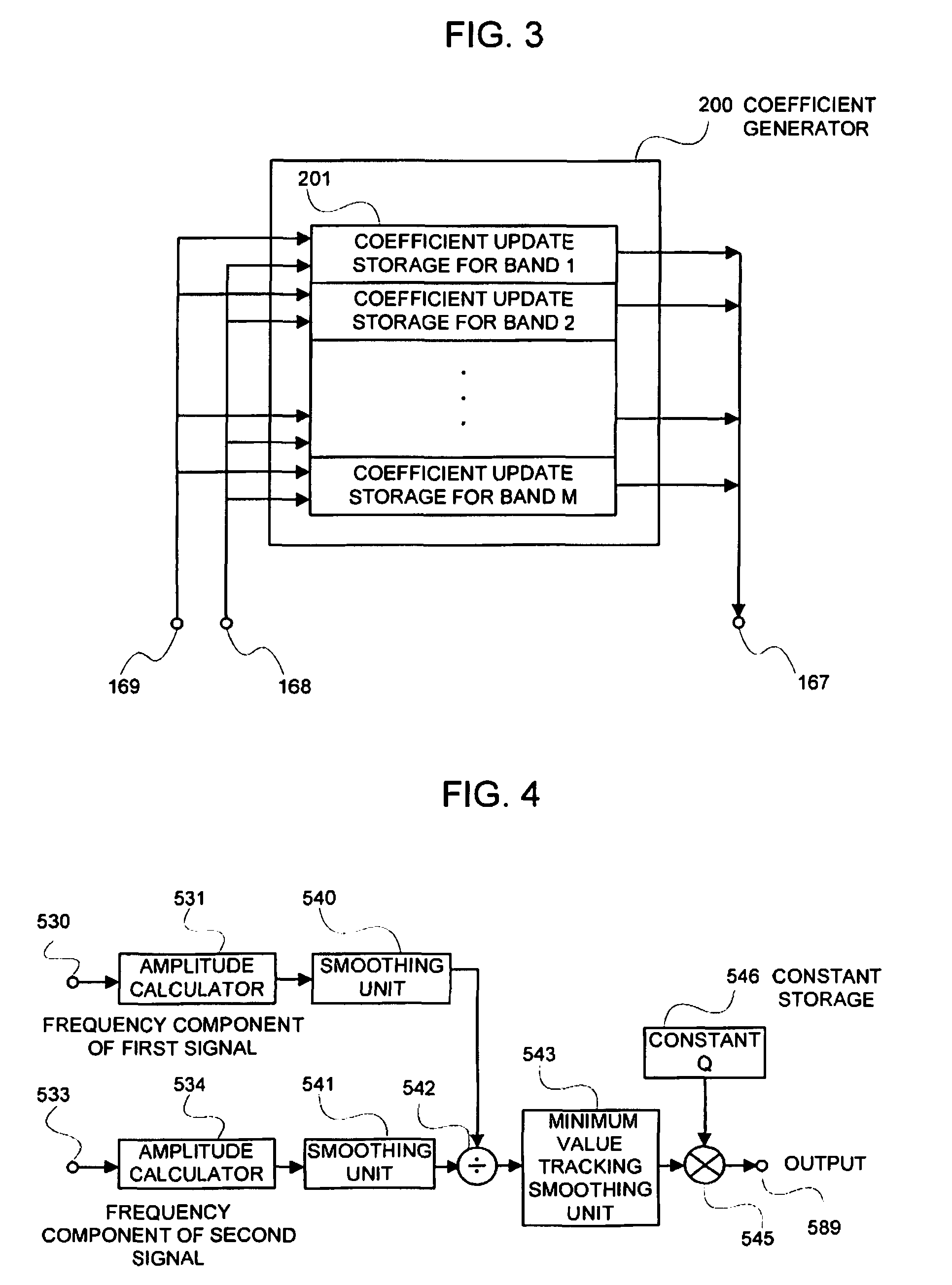Echo suppressing method and apparatus
a technology of applied in the field of echo suppression method and apparatus, can solve the problems of high echo removal amount, difficult to originate a call in the far-end side, etc., and achieve the effect of suppressing echo and small errors
- Summary
- Abstract
- Description
- Claims
- Application Information
AI Technical Summary
Benefits of technology
Problems solved by technology
Method used
Image
Examples
first example
[0126]FIG. 13 is a block diagram of the first example of the present invention. A difference with the technology shown in FIG. 30 is that the coefficient generator 200 is mounted, a spectral subtraction unit 6 is inserted between the subtracter 4 and the output terminal 9 of the near-end signal of FIG. 30, and the above spectral subtraction unit 6 receives the output signal of the linear echo canceller 3, and yet receives the crosstalk coefficient being outputted by the coefficient generator 200.
[0127]The coefficient generator 200 generates the coefficient indicative of a degree of the echo crosstalk. The spectral subtraction unit 6 develops the output signal of the subtracter 4 and the output signal of the linear echo canceller 3 into respective frequency domains, and removes the echo frequency by frequency. Hereinafter, exemplary configurations and operations of the coefficient generator 200 and the spectral subtraction unit 6 will be explained in its order.
[0128]200>
[0129]The coe...
second example
[0158]FIG. 16 is a block diagram of the second example of the present invention. A difference with the first example shown in FIG. 13 is that while, as a signal being inputted into the spectral subtraction unit 6, the output of the subtracter 4 is employed in the first example, the output signal of the microphone 1 is employed in the second example. While the main component of the echo has been removed by the linear echo canceller 3 in the output of the subtracter 4, the echo has not been removed in the output signal of the microphone 1. This difference is a difference as to whether the removal of the main component of the echo is performed by the linear echo canceller 3 and the subtracter 4 or by the spectral subtraction unit 6, and the second example is completely identical to the first example in an advantageous effect for the distortion. Thus, also in the second example, the suppression of the echo can be suppressed at a high volume level also in the case that the echo cannot be...
third example
[0163]Next, an example employing a spectral suppression unit as the conversion unit 100 of FIG. 1 will be explained.
[0164]FIG. 17 is a block diagram of the third example of the present invention. A difference with the first example shown in FIG. 13 is that the spectral subtraction unit 6 is replaced with a spectral suppression unit 7. The spectral suppression unit 7 will be explained by employing the figure.
[0165]FIG. 18 is a block diagram illustrating the spectral suppression unit 7. The output signal of the subtracter 4 of FIG. 17 is inputted from an input terminal 72. A Fourier transformer 70 receives the signal inputted from the input terminal 72, calculates an M-point Fourier transform thereof, sends a calculated result (amplitude and phase) as a first Fourier coefficient to Fourier coefficient multipliers 76m (m=1 to M) that correspond to respective frequencies, and simultaneously therewith, sends it to the coefficient generator 200 through the terminal 168. On the other hand,...
PUM
 Login to View More
Login to View More Abstract
Description
Claims
Application Information
 Login to View More
Login to View More - R&D
- Intellectual Property
- Life Sciences
- Materials
- Tech Scout
- Unparalleled Data Quality
- Higher Quality Content
- 60% Fewer Hallucinations
Browse by: Latest US Patents, China's latest patents, Technical Efficacy Thesaurus, Application Domain, Technology Topic, Popular Technical Reports.
© 2025 PatSnap. All rights reserved.Legal|Privacy policy|Modern Slavery Act Transparency Statement|Sitemap|About US| Contact US: help@patsnap.com



